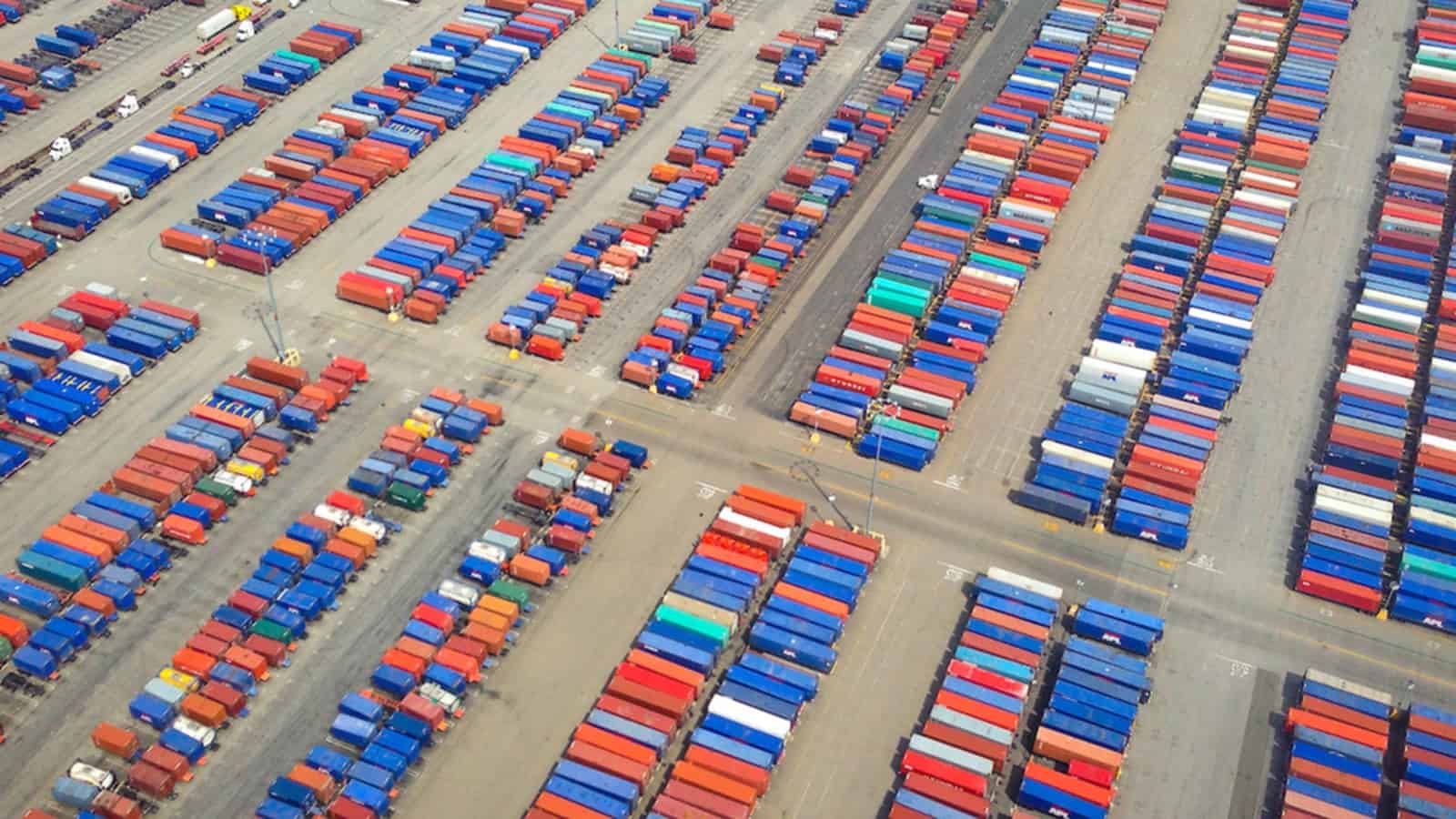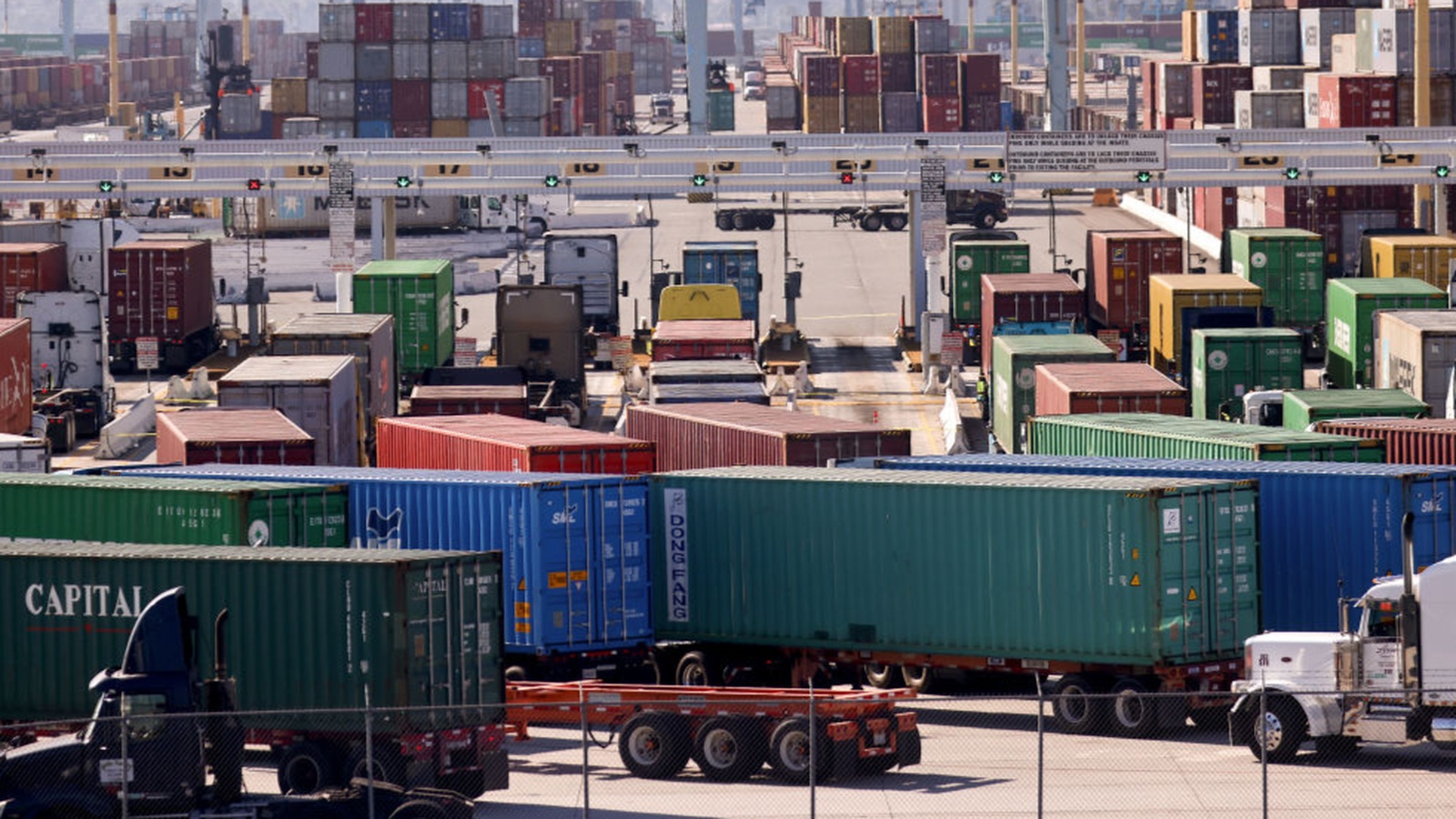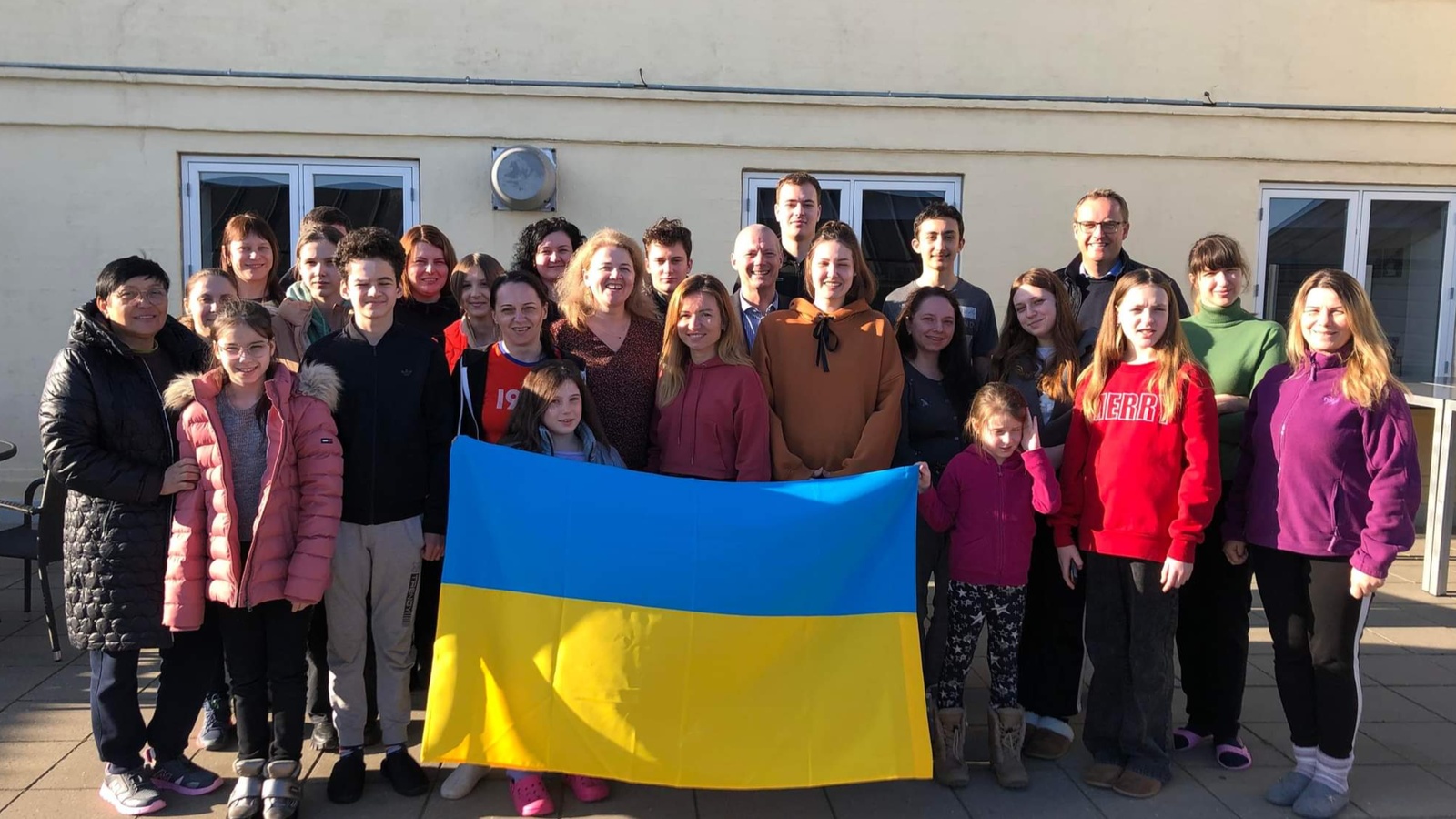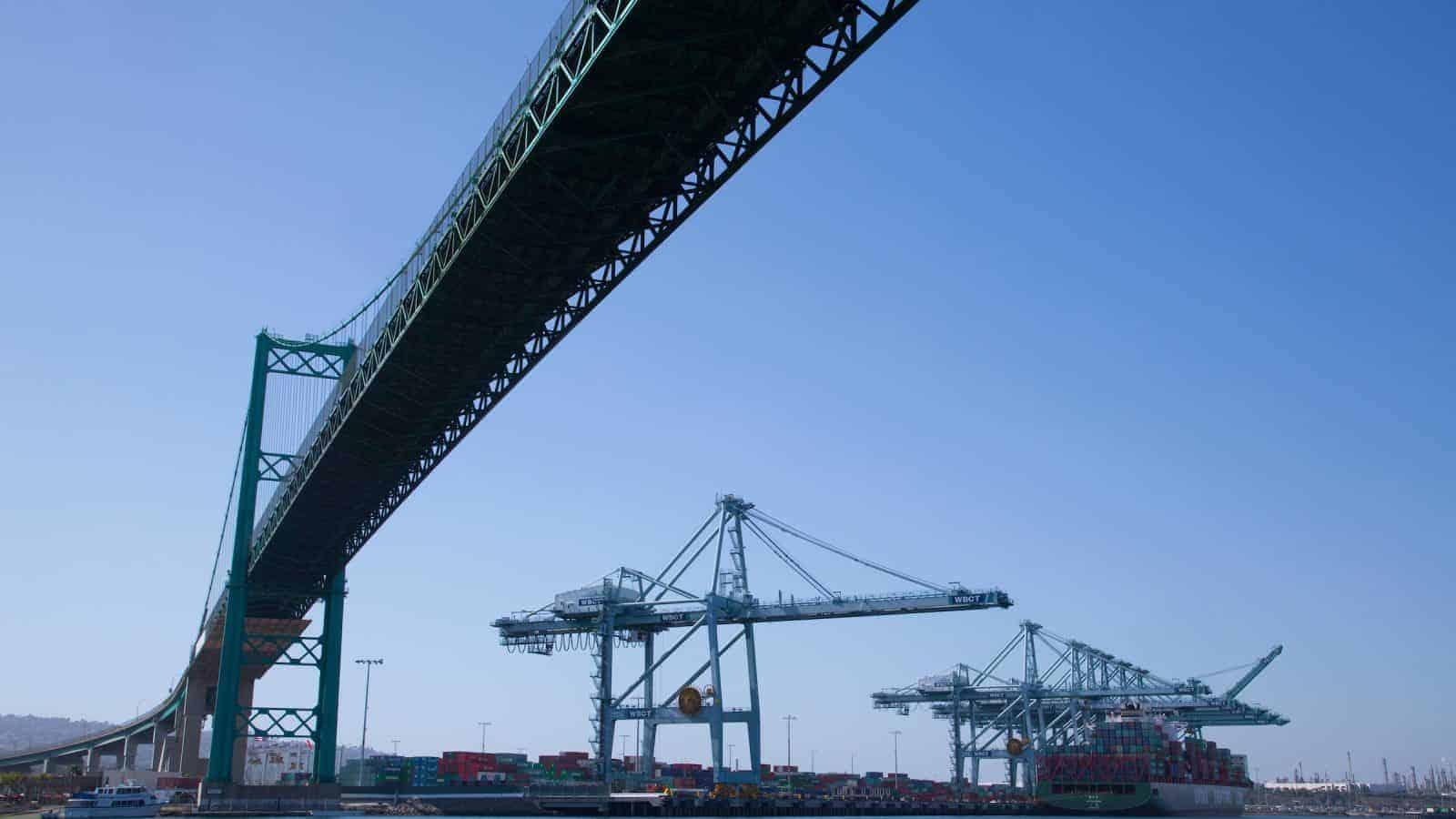How Manufacturers Can Amp Up Their Cyber Protections

Manufacturers are used to compliance requirements. These requirements are a part of daily life; from safety to quality, manufacturers must constantly track and adhere to rules that ensure their products and processes meet certain standards.
For manufacturers that work with the Department of Defense, that includes meeting Defense Federal Acquisition Regulation Supplement cybersecurity requirements, including the highly anticipated “cybersecurity maturity model certification.”
The basics: CMMC is the U.S. Defense Department’s proposed method for checking that their suppliers have strong enough cybersecurity protections to safeguard the Department’s information. Whether it’s a prime, subcontractor or sub-tier supplier, every company doing business with the Defense Department will need to comply with CMMC to receive a contract.
The big picture: All manufacturers should secure their businesses against cyberattacks, whether or not they are obligated to under DFARS or other requirements. According to the National Institute of Standards and Technology Manufacturing Extension Partnership Cybersecurity Services Lead Celia Paulsen, one of the most important—and most often neglected—steps manufacturers can take is simply to understand the structure and information flow within their own companies.
- “A lot of companies don’t know how information flows in their companies and how their companies work,” said Paulsen. “Once you have that information, you’ll be able to scope out the rest of the compliance efforts.”
- “In some cases, you might find that all of your controlled information can be limited to one computer. If so, great! Keep it separate and you won’t need to worry as much about the rest of the business,” she added.
- “In other cases, you might find that there’s no easy way to cordon off CUI, and it might be cheaper to secure the whole business. That’s something you wouldn’t have known otherwise.”
All aspects of the business, from physical structures to software, should be considered when thinking about security. According to Paulsen, looking at your business from the outside-in can turn up problems that are easily fixed.
- “Think of it as if you were looking to protect your house,” said Paulsen. “Begin by looking at the business physically – are there locks on the doors and windows? Do you have backup power?”
- “Then look inside the house: Where are your jewels (i.e. computers) located? Are they protected from curious eyes? Are your home, guest and business networks separated?”
- “Last, go to the software and data level. Do you have backups? What do you have in your computers that keeps sensitive information secure?”
Sensitive information doesn’t just flow through an individual manufacturer; it often travels up and down the supply chain, reaching other businesses that may not be taking the proper precautions.
- It’s imperative for manufacturers to discuss these issues with their connecting businesses, Paulsen notes They should determine what requirements apply, whether access to sensitive information is needed for either business, and if so, how it can be protected.
- “When you’re integrating IOT devices onto the shop floor or implementing AI or going to the cloud—anytime you’re purchasing something that is smart, or that has a chip—you need to consider the security of it,” said Paulsen.
- “A lot of breaches happen because of supply chain attacks where the products aren’t developed with security in mind. That is key to a long-term strategy: making sure that whatever you buy, they’re considering security.
Learn More: NIST provides additional resources, including the Small Business Cybersecurity Corner, and the Manufacturing Extension Partnership.
NAM resources: Are you prepared in the event of a ransomware attack? Built specifically for manufacturers, NAM Cyber Cover was designed to provide risk mitigation and protection. Find out more at www.namcybercover.com.
Successful Indo-Pacific Framework Critical for Manufacturers
Washington, D.C. – Following the Biden administration’s announcement on the launch of the Indo-Pacific Economic Framework for Prosperity, National Association of Manufacturers Vice President of International Economic Affairs Ken Monahan released the following statement:
“NAM President and CEO Jay Timmons pressed the administration on critical components to the IPEF earlier this year, and manufacturers are encouraged that the framework will address key manufacturing priorities we have outlined in areas such as digital economy, resilient supply chains and transparency and good governance. These priorities are essential for manufacturing businesses and workers for a region that represents more than two-fifths of total U.S. manufacturing trade and is a market for U.S. exports that support nearly 2 million American jobs.
“As discussions continue, we’re looking for U.S. leaders to support manufacturing jobs by taking an approach that opens markets, strengthens U.S. innovation and technology leadership, raises global standards and establishes best-in-class trade rules.”
Background: NAM President and CEO Jay Timmons stressed in a February letter to senior administration officials that high-standards trade with the Indo-Pacific is critical to manufacturers’ success and global competitiveness. Additionally, the NAM submitted comments on the IPEF in April to the Office of the U.S. Trade Representative.
-NAM-
The National Association of Manufacturers is the largest manufacturing association in the United States, representing small and large manufacturers in every industrial sector and in all 50 states. Manufacturing employs more than 12.7 million men and women, contributes $2.71 trillion to the U.S. economy annually and accounts for 58% of private-sector research and development. The NAM is the powerful voice of the manufacturing community and the leading advocate for a policy agenda that helps manufacturers compete in the global economy and create jobs across the United States. For more information about the NAM or to follow us on Twitter and Facebook, please visit www.nam.org.
Manufacturing Supply Disruptions Could Last into 2023

Supply chain disruption could continue for more than another year, according to the newest Resilient M4.0 Supply Chain survey conducted by the NAM’s Manufacturing Leadership Council. The MLC is the digital transformation arm of the NAM.
What’s the holdup? A combination of factors is causing fundamental shifts in supply chain approaches across the industry. These include pandemic lockdowns, blocked shipping lanes, container scarcity, material and component shortages, extreme weather events, rising prices and military conflict.
What manufacturers are doing about it: Supply chain organizations are reassessing traditional supply chain strategies, reducing network complexity and integrating key functions.
- They are also redesigning processes and harnessing the power of digital tools to transform their supply chain ecosystems.
Universal disruption: Even supply chain structures with some local or regional networks have been affected by recent events, according to the MLC’s survey.
- Ninety percent of respondents reported suffering either significant (52.5%) or partial (39%) disruption in the past two years. Just 0.5% said they had seen no disruption.
Improving resilience: While many manufacturers have taken action to reduce supply vulnerabilities, 73% of companies said their current supply chains are not fully protected, and 12% said they believe their supply chains lack resilience.
Integrated supply chains: While today just 19% of companies said their supply chain structures are fully integrated, this proportion is set to more than double (to 47%) within the next two years.
- The number of companies that remain dependent on siloed operations is set to fall from 14% to 4% over the same period.
Digital opportunities: The race to fully digitize more supply chain operations is picking up speed.
- In nearly every supply chain function, companies said they are planning significant increases in digital adoption in the next two years to streamline their supply chain organizations.
Obstacles to progress: Many obstacles to future supply chain development involve issues with industry partners. Among the challenges cited by manufacturers in the survey were the following:
- Differences in digital maturity among partners (54%)
- A lack of common data platforms (53%)
- Problems transforming traditional supply chain processes (29%)
- Upgrading legacy equipment (26%)
- A lack of skilled employees (22%)
Review the data: Click here to review the data in detail and read manufacturer responses to survey questions.
NAM Launches Supply Chain Hub

Manufacturers have been facing unprecedented supply chain challenges. The NAM is leading through this crisis—and we’ve launched an online resource that brings all that information and advocacy under one roof. At NAM.org/SupplyChain, manufacturers can find everything they need to know about the NAM’s work to strengthen the supply chain and access critical tools that can help them make important progress.
The resource: Assembled with critical assistance from the NAM’s Manufacturing Leadership Council and Innovation Research Interchange, this online resource captures the many activities underway and the information available from the NAM.
The work: The information and tools at NAM.org/SupplyChain cover a wide range of areas, including the following:
- Boosting competitiveness: With a level playing field, manufacturers in the United States can compete and win anywhere. That’s why the NAM is working with Congress on a range of competitiveness measures that would provide billions of dollars for supply chain resiliency, innovation and domestic semiconductor production as well as promote trade and combat counterfeiting. Actions like these give manufacturers the tools they need to succeed.
- Promoting operational excellence: Manufacturers are committed to performing efficient and innovative work—and this resource offers NAM members access to a library of meetings, webinars and other resources from NAM experts designed to help manufacturers share best practices and ensure their companies can grow and thrive.
- Building the workforce: The shortage of skilled workers is a major contributor to supply chain challenges. Through The Manufacturing Institute’s programming and key initiatives like Creators Wanted, the NAM is working to create a new generation of manufacturers while retaining and retraining vital employees.
Taking action: Through the NAM’s grassroots advocacy campaign, Manufacturers United, the NAM is mobilizing thousands of grassroots manufacturing supporters from across the country to engage lawmakers and community members alike on supply chain issues.
The bottom line: “Manufacturers have been grappling with significant supply chain challenges since the start of the pandemic,” said NAM Managing Vice President of Tax and Domestic Economic Policy Chris Netram. “The NAM’s new supply chain hub will centralize critical thought leadership and advocacy tools on this issue, as well as provide a guide to policies we need to grow manufacturing in America.”
What’s next: The NAM is fighting for a strong manufacturing competitiveness package in Congress this spring to help address supply chain challenges, as well as continuing the operational, policy and legal leadership captured in this frequently updated resource.
Manufacturers Support Relief Efforts in Ukraine

Project HOPE, a nonprofit the NAM is working with on humanitarian relief, is ensuring that some of the most vulnerable victims of the war in Ukraine receive care and support.
What’s happening: The U.S.-based international nonprofit, which has aid teams on the ground in Ukraine and in neighboring Poland, Moldova and Romania, recently delivered the following in Ukraine:
- Twenty-two pallets of medicines;
- Eight Interagency Emergency Health Kits, each one containing enough essential medicine to serve a population of 10,000 people for more than three months; and
- Forty-five Essential Health Packs, each of which comes with a minimum of 800 courses of treatment, including over-the-counter and prescription medication, antibiotics, anti-inflammatories and anti-parasitics.
Project HOPE is helping deliver crucial medicines to pediatric oncology patients at the University Children’s Hospital in Krakow, which the organization has supported for nearly 50 years. And manufacturers are helping its efforts.
- Pharmaceutical company Eli Lilly send a shipment of its diabetes treatments to Ukraine earlier this month. Lilly will continue to provide medications, including oncology and COVID-19 treatments, to the country.
- Manufacturers have donated thousands of dollars through Project HOPE, both directly and through the NAM’s partnership page. As of this writing, donations through the partnership are at more than $11,000.
Other efforts: Project HOPE has partnered with nongovernmental organizations in and around Ukraine to provide food as well as medicine and technical support to health facilities treating refugees, displaced persons and others affected by the war.
How you can help: Those who wish to donate to Project HOPE may do so here.
- To get more information on what the NAM is doing to help, or to share how your company is contributing to the relief effort, please contact the NAM at [email protected].
Read more: Many manufacturers are making a difference on the ground in Ukraine. Read our stories about Sukup Manufacturing and Greene Tweed.
The above photo, which runs courtesy of Project HOPE, shows oncology patient Tamara, 5, and her mother Mikhaila at the University Children’s Hospital in Krakow. Tamara and Mikhaila fled the war in Ukraine and are seeking safety in Poland.
A Manufacturer Steps Up in Ukraine

When Russia invaded Ukraine, Sukup Manufacturing knew it couldn’t stand by. The Iowa-based company—which manufactures grain storage, drying and handling equipment—has a European counterpart located in Denmark, Sukup Europe, that partners with the Grain House Company in Ukraine. As Russian troops threatened Ukraine, President and CEO Steve Sukup immediately greenlit the effort to help Grain House’s personnel and families get to safety.
“When Russia invaded Ukraine, we immediately said, how can we help?” said Emily Schmitt, Sukup’s chief administrative officer and general counsel. “We called the CEO of Sukup Europe, and his response was, I’m really glad I work for a company where I’m able to say I can help and do what’s needed.”
The mission: Managing Director of Sukup Europe Jens Erik Iversen and Co-Founder of Grain House Company Andriy Semenovych worked together on the effort, gathering the resources needed to make the 1,200-mile journey from a pickup point in Ukraine to a community in Denmark. Sukup’s Iowa headquarters coordinated with its counterparts, offering financial support and even leveraging business connections on the route between Ukraine and Denmark to help move refugees safely out of the country. Determined to overcome any last-minute obstacles, Iversen himself rode in the bus to meet the Ukrainian families at the border—bringing food and clothes and helping to provide asylum assistance.
Since that first caravan, Sukup has organized multiple trips to the border. Through their efforts, they have been able to bring 64 people in more than 20 families to Denmark.
- “Being a family business is not where family ties stop here,” said Schmitt. “It’s really ingrained in Sukup to give back. Every employee isn’t just an employee—they’re family. And their families are our families as well.”
The way forward: Today, Sukup is focused on making sure there’s a continuous and reliable community effort to support the refugees in Denmark. It is working with Danish officials to ensure that the Ukrainian refugees can remain in the country and with the U.S. government to secure temporary work visas that could allow the Ukrainians to go to Iowa. It is also working through the Sukup Family Foundation to continue providing food, clothing and other resettlement resources to the Ukrainian families they’ve evacuated.
The last word: “We’re hearing that there’s upwards of four million refugees coming out of Ukraine now—so this is one grain of sand on the beach,” said Sukup Chairman and NAM Board Member Charles Sukup. “But we’re so proud our people stepped up and did it so rapidly and efficiently. This was the epitome of our history of taking care of each other.”
Manufacturers: A Time of Challenge and Uncertainty
Timmons: “More committed than ever to focus on policy—not politics, personality or process”
Washington, D.C. – National Association of Manufacturers President and CEO Jay Timmons today released the following statement in response to President Biden’s State of the Union address:
“President Biden rightly focused on many policies that will keep manufacturing strong in America amid a global crisis. We strongly agree that the bipartisan infrastructure law was an accomplishment of historic proportion, and we continue to support its swift implementation.
“We are ready to work with anyone to advance policies that will strengthen the industry, but we strongly oppose proposals that would weaken our industry and threaten our recovery, including undoing the progress of tax reform and imposing policies that would disrupt our workplaces. Manufacturers are working hard to fill more than 800,000 open jobs and connect more Americans with rewarding careers, and some of the actions outlined tonight would make it harder for us to solve this top challenge.
“We couldn’t agree more, however, that supply chain issues must remain a focus for lawmakers, and we’re going to continue working with both parties to deliver final competitiveness and supply chain legislation and build on the steps the administration is taking. In this time of challenge and uncertainty, we’re more committed than ever to focus on policy—not politics, personality or process.
“As the United States and our allies continue to lend support for Ukraine’s fight for its democracy, President Biden used his State of the Union address tonight to rally Americans and the world in support of the cause and rightly emphasized the importance of American leadership and defending our shared values when so much is at stake. Manufacturers join this call for unity.”
-NAM-
The National Association of Manufacturers is the largest manufacturing association in the United States, representing small and large manufacturers in every industrial sector and in all 50 states. Manufacturing employs more than 12.5 million men and women, contributes $2.57 trillion to the U.S. economy annually and has the largest economic multiplier of any major sector and accounts for 58% of private-sector research and development. The NAM is the powerful voice of the manufacturing community and the leading advocate for a policy agenda that helps manufacturers compete in the global economy and create jobs across the United States. For more information about the NAM or to follow us on Twitter and Facebook, please visit www.nam.org.
Business Leaders Urge Resolution of U.S.-Canada Border Blockade
The National Association of Manufacturers, U.S. Chamber of Commerce and Business Roundtable today issued the following statement on the disruptions to trade at U.S.-Canada border crossings:
“The disruptions we are seeing at the U.S.-Canada border — at the Detroit-Windsor Ambassador Bridge and at other crossings — are adding to the significant supply chain strains on manufacturers and other businesses in the United States.
“The business community is rolling up its sleeves to find workarounds and keep facilities up and running, but we are already seeing some production cuts, shift reductions, and temporary plant closures. The North American economy relies on our ability to work closely together, including our manufacturing sectors. We need to apply the same spirit of cooperation to tackle this problem.
“We respectfully urge the Canadian government to act swiftly to address the disruption to the flow of trade and its impact on manufacturers and other businesses on both sides of the border. We appreciate that the Biden Administration is engaged with the Canadian government, and we strongly encourage officials to continue efforts to resolve these blockages at the border.”
-NAM-
The National Association of Manufacturers is the largest manufacturing association in the United States, representing small and large manufacturers in every industrial sector and in all 50 states. Manufacturing employs more than 12.5 million men and women, contributes $2.52 trillion to the U.S. economy annually and has the largest economic multiplier of any major sector and accounts for 58% of private-sector research and development. The NAM is the powerful voice of the manufacturing community and the leading advocate for a policy agenda that helps manufacturers compete in the global economy and create jobs across the United States. For more information about the NAM or to follow us on Twitter and Facebook, please visit www.nam.org.
How Manufacturers Can Navigate Supply Chain Challenges

As the global supply chain, worker shortage and wage inflation challenges many had hoped were transitory dig in their heels, manufacturers everywhere are wondering how best to get around them.
Panelists at “Successfully Navigating Current Supply Chain Disruptions,” a webinar hosted by the NAM’s Manufacturing Institute, Manufacturing Leadership Council and professional services firm PwC, sought to answer that question.
We rounded up the speakers’ top tips for manufacturers seeking to sustainably and profitably maneuver the several sizable hurdles they still face going into 2022.
- Break down siloes. Now that manufacturers are having to replace traditional supply chain models, changing their company operations to have staff work across siloes is more important than ever, said PwC Partner Debjit Banerjee.
- Expect disruption. If it taught us nothing else, COVID-19 conveyed the importance of being prepared for the unexpected. Going forward, manufacturers would do well to not just plan for the possibility of disruption, but to assume it will come. To that end, preplanned “differentiated customer service” and disruption drills should become the norm, Banerjee said.
- Advance your supply chain planning. Increasingly, Nexteer Automotive, a global maker of steering and driveline components, is focusing on advanced supply chain planning, programs that help predict shipments, supply and demand for smoother operations, said Nexteer Automotive Vice President of Global Manufacturing Operations Dennis Hoeg. With it, “decisions can be made smarter, earlier.”
- Automate. Manufacturers should consider automating repetitive “transaction” work and reserving their employees for analytical tasks that only humans can do, according to Hoeg.
- Balance agility and resilience. Before the pandemic, “we were working on a strategy that was based on agility,” said Rockwell Automation Chief Supply Chain Officer Ernest Nicolas Jr. “Through the pandemic … we had to reprioritize. We had to take a step back to balance agility and resilience.” Manufacturers that want a better agility-resilience balance can do so “through data, process and technology” enablement, according to Nicolas.
- “Relentlessly prioritize.” Nicolas so believes in this advice that he ended his presentation with it. “There’s so much going on right now; we want to be certain we manage our priorities,” he said. “So, there’s a lot we’re saying ‘not now’ to …. but it’s not a matter of ‘no.’ It’s a matter of, ‘We’ve got to get these things finished so we can lay the foundation’” in this new normal.
Manufacturers: Now That This Historic Bill Has Become Law, We Can Build a Future Worthy of the Next Generation
Washington, D.C. – Following President Biden’s signing of the Infrastructure Investment and Jobs Act, National Association of Manufacturers President and CEO Jay Timmons and Trane Technologies Executive Chair and NAM Board Chair Mike Lamach released the below statements:
“Now that this historic bill has become law, we can build a future worthy of the next generation,” said Timmons. “For manufacturers, this is a victory years in the making. In 2016, the NAM released our ‘Building to Win’ plan, which called for exactly this type of bold infrastructure investment. It has guided our advocacy with administrations and legislators of both parties, and the leadership of President Biden and senators from both parties produced a bill that achieved many of our ‘Building to Win’ goals without raising tax rates on manufacturers. And this bipartisan approach can be a model for future legislation—one that puts policy above politics, personality or process.”
“As chair of the National Association of Manufacturers, I’m honored to be at today’s signing and pleased to have been part of this historic, bipartisan process to build a safer, stronger infrastructure,” said Lamach. “The Infrastructure Investment and Jobs Act is a critical investment in our nation’s economic recovery and in the future of manufacturing. Funding for critical transportation, broadband, water and energy systems will strengthen supply chains, protect the environment and enable opportunity for people across our country.”
To see key provisions championed by the NAM in the Infrastructure Investment and Jobs Act, click here.
-NAM-
The National Association of Manufacturers is the largest manufacturing association in the United States, representing small and large manufacturers in every industrial sector and in all 50 states. Manufacturing employs more than 12.5 million men and women, contributes $2.5 trillion to the U.S. economy annually and has the largest economic multiplier of any major sector and accounts for 58% of private-sector research and development. The NAM is the powerful voice of the manufacturing community and the leading advocate for a policy agenda that helps manufacturers compete in the global economy and create jobs across the United States. For more information about the NAM or to follow us on Twitter and Facebook, please visit www.nam.org.
